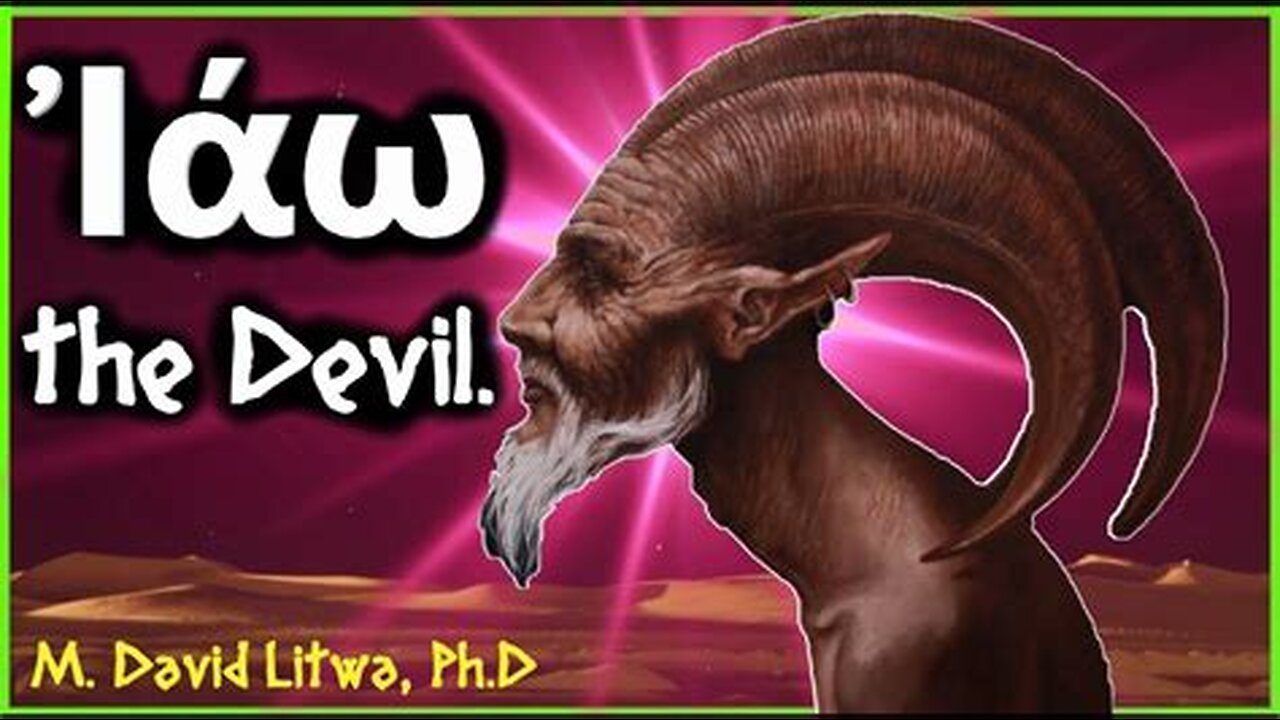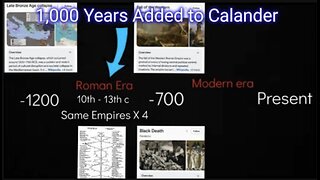Premium Only Content

Early Christians: YAHWEH is Actually the DEVIL
In the Platonic, Neopythagorean, Middle Platonic, and Neoplatonic schools of philosophy, the demiurge is an artisan-like figure responsible for fashioning and maintaining the physical universe. The Gnostics adopted the term demiurge. Although a fashioner, the demiurge is not necessarily the same as the Creator figure in the monotheistic sense, because the demiurge itself and the material from which the demiurge fashions the universe are both considered consequences of something else. Depending on the system, they may be considered either uncreated and eternal or the product of some other entity.
The word demiurge is an English word derived from demiurgus, a Latinised form of the Greek δημιουργός or dēmiurgós. It was originally a common noun meaning "craftsman" or "artisan", but gradually came to mean "producer", and eventually "creator". The philosophical usage and the proper noun derive from Plato's Timaeus, written c. 360 BC, where the demiurge is presented as the creator of the universe. The demiurge is also described as a creator in the Platonic (c. 310–90 BC) and Middle Platonic (c. 90 BC–AD 300) philosophical traditions. In the various branches of the Neoplatonic school (third century onwards), the demiurge is the fashioner of the real, perceptible world after the model of the Ideas, but (in most Neoplatonic systems) is still not itself "the One". In the arch-dualist ideology of the various Gnostic systems, the material universe is evil, while the non-material world is good. According to some strains of Gnosticism, the demiurge is malevolent, as it is linked to the material world. In others, including the teaching of Valentinus, the demiurge is simply ignorant or misguided.
The first and highest aspect of God is described by Plato as the One (Τὸ Ἕν, 'To Hen'), the source, or the Monad. This is the God above the Demiurge, and manifests through the actions of the Demiurge. The Monad emanated the demiurge or Nous (consciousness) from its "indeterminate" vitality due to the monad being so abundant that it overflowed back onto itself, causing self-reflection. This self-reflection of the indeterminate vitality was referred to by Plotinus as the "Demiurge" or creator. The second principle is organization in its reflection of the nonsentient force or dynamis, also called the one or the Monad. The dyad is energeia emanated by the one that is then the work, process or activity called nous, Demiurge, mind, consciousness that organizes the indeterminate vitality into the experience called the material world, universe, cosmos. Plotinus also elucidates the equation of matter with nothing or non-being in The Enneads[9] which more correctly is to express the concept of idealism or that there is not anything or anywhere outside of the "mind" or nous (c.f. pantheism).
The figure of the Demiurge emerges in the theoretic of Iamblichus, which conjoins the transcendent, incommunicable “One,” or Source. Here, at the summit of this system, the Source and Demiurge (material realm) coexist via the process of henosis. Iamblichus describes the One as a monad whose first principle or emanation is intellect (nous), while among "the many" that follow it there is a second, super-existent "One" that is the producer of intellect or soul (psyche).
The "One" is further separated into spheres of intelligence; the first and superior sphere is objects of thought, while the latter sphere is the domain of thought. Thus, a triad is formed of the intelligible nous, the intellective nous, and the psyche in order to reconcile further the various Hellenistic philosophical schools of Aristotle's actus and potentia (actuality and potentiality) of the unmoved mover and Plato's Demiurge.
Gnosticism presents a distinction between the highest, unknowable God or Supreme Being and the demiurgic "creator" of the material, commonly identified as Yahweh, the God of the Hebrew Bible. Several systems of Gnostic thought present the Demiurge as antagonistic to the will of the Supreme Being: his act of creation occurs in an unconscious semblance of the divine model, and thus is fundamentally flawed, or else is formed with the malevolent intention of entrapping aspects of the divine in materiality. Thus, in such systems, the Demiurge acts as a solution to (or, at least possibly, the problem or cause that gives rise to) the problem of evil.
-
 19:25
19:25
Don't Obey
8 months agoMathematician Shows History of X - XIII C. Was Duplicated 4 X
3.41K -
 11:06
11:06
Scammer Payback
17 hours agoScammer Fails Tech Test...Gets His Computer Absolutely Destroyed
2.99K1 -
 8:45
8:45
Millionaire Mentor
17 hours agoDevin Nunes SHOCKED Everyone After EXPOSING The Deep State’s Dirty Secret
4.32K5 -
 LIVE
LIVE
BEK TV
23 hours agoTrent Loos in the Morning - 10/15/2025
188 watching -
 2:53
2:53
OfficialJadenWilliams
16 hours agoWhen GTA 6 is TOO detailed...
3.74K -
 LIVE
LIVE
FyrBorne
10 hours ago🔴Battlefield 6 Live M&K Gameplay: Finding The Real GOATs of Battlefield 6
56 watching -
 50:14
50:14
Coin Stories with Natalie Brunell
22 hours agoUptober, Q4, and Bitcoin’s Next Leg with Mark Moss
70K9 -
 LIVE
LIVE
Lofi Girl
2 years agoSynthwave Radio 🌌 - beats to chill/game to
167 watching -
 LIVE
LIVE
Midnight In The Mountains™
1 hour agoMorning Coffee w/ Midnight & The Early Birds | Musks Starlink Falling from Heaven... Internet Heaven
72 watching -
 42:12
42:12
PudgeTV
1 hour ago🔴 The Forever Winter | The 3 Rumskateers Adventure into Darkness
1.47K1